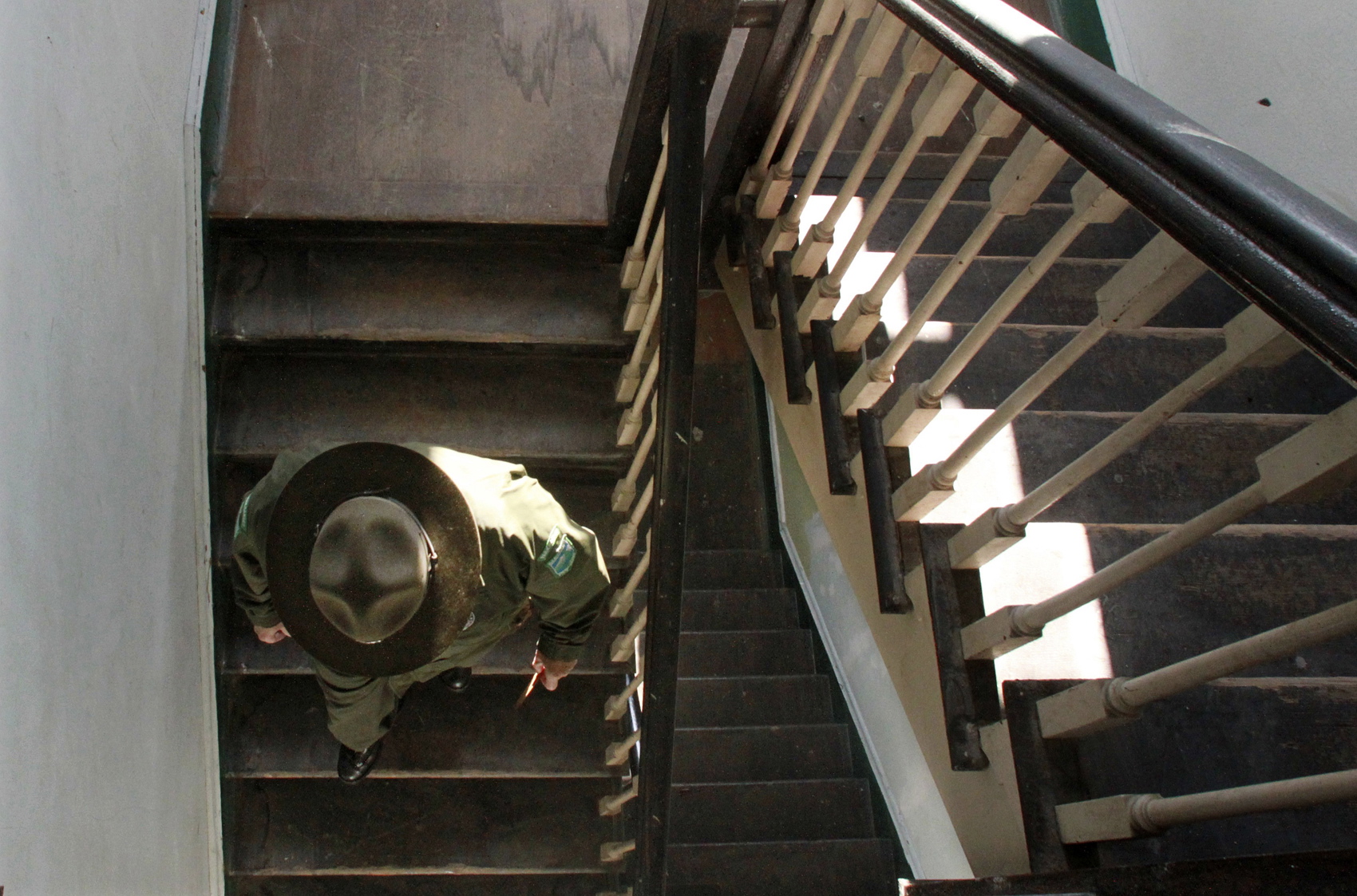• Five miles of trails open to hikers and bicyclists.
• A summer outdoor concert series, on August weekends at Battery Bankhead.
• A Halloween festival, including the Powerhouse of Peril, a haunted house in the fort’s echoing, bunkerlike old power station.
• Boating on the harbor, with summer kayak rentals at nearby Nordland General Store.
• Visit the domestic geese, former pets of the ranger’s children, at a pond near Battery Wansboro.
• Host a reception or concert in the fort’s renovated hospital (with oak dance floor), a project of the Friends of Fort Flagler, an active volunteer group. Or attend a dance or other event in the old theater.
• Take a guided tour of historic buildings and gun emplacements, offered Wednesdays, Saturdays and Sundays from mid-May to mid-September, by donation.
• Five miles of trails open to hikers and bicyclists.
• A summer outdoor concert series, on August weekends at Battery Bankhead.
• A Halloween festival, including the Powerhouse of Peril, a haunted house in the fort's echoing, bunkerlike old power station.
• Boating on the harbor, with summer kayak rentals at nearby Nordland General Store.
• Visit the domestic geese, former pets of the ranger's children, at a pond near Battery Wansboro.
• Host a reception or concert in the fort's renovated hospital (with oak dance floor), a project of the Friends of Fort Flagler, an active volunteer group. Or attend a dance or other event in the old theater.
• Take a guided tour of historic buildings and gun emplacements, offered Wednesdays, Saturdays and Sundays from mid-May to mid-September, by donation.
NORDLAND — When most people talk about “that fort over by Port Townsend, you know, the big state park,” the usual answer is, “Oh, Fort Worden! I love that place.”
And it’s well-known for good reasons: Its full palette of arts events, its distinguished collection of officers quarters available for rent, its lighthouse that prompts everyone to reach for the camera phone, and eye-goggling vistas of saltwater and mountains.
Not everyone knows it has a twin sister, of a sort, in Fort Flagler, only three miles away as the cormorant flies, with many of the same fine qualities.
Hidden at road’s end on Marrowstone Island, across the bay from Port Townsend, Flagler’s off-the-beaten-path character gives it an edge.
It’s also bigger than Fort Worden, with almost double the acres (784) and almost twice the saltwater shoreline (3.6 miles) of its better-known sibling.
Actually, as siblings go, Fort Flagler is a triplet. It’s one of three military forts — each now a state park — that formed the so-called “Triangle of Fire” whose big guns were meant to protect the entrance to Puget Sound, their construction spurred on by the Spanish-American War of 1898. (Fort Casey, home to the Admiralty Head lighthouse seen on some Washington license plates, is the third.)
Sibling rivalry isn’t the point, though. Fort Flagler is a great park all on its own.
“We’re at the end of the road here, and when folks get here it’s like they’ve hit a new kind of Nirvana,” said park manager Mike Zimmerman, who has been at Flagler 16 years.
What makes it a gem in our book:
Beyond its hideaway nature, there’s sheer variety.
Drive in the gate and you’re cruising through a virtual tunnel of cedars, firs and hemlocks, many untouched since the fort’s construction more than 100 years ago. Beyond the forest are broad beaches of sand, cobbles and drift logs, with clam shells big as your hand and bull-kelp whips that could tame a lion (or a golden retriever, anyway).
Waters here are rich, near the corner of Admiralty Inlet and the Strait of Juan de Fuca, where all the seawater feeding Puget Sound churns in and out with daily tides. Marrowstone Point, named by Capt. George Vancouver in 1792 for the type of rock and clay in the island’s bluffs, is bordered by an underwater shelf where nutrients well up and herring swarm.
In silver salmon season, anglers can be elbow to elbow bordering the Marrowstone Point light station. “You’ll do better off the beach than guys out there in boats,” said local angler Pete Leenhouts.
To the natural wonders add the man-made: a broad and pretty parade ground (often grazed by deer) surrounded by old military homes you can rent for the night, looking out on views of Mount Baker, Mount Rainier and every big ship and little tug entering or leaving the Sound.
What you won’t find everywhere:
Military history that will make you think about the pace of change.
Only a few decades before this fort’s 1899 activation, men waged war by charging across fields with muskets. Within a few years of its opening, Flagler had big state-of-the-art “disappearing” guns that could spring out of their bunkers and then hide away for reloading — only to be rendered obsolete with the arrival of aircraft and long-range guns on battleships. By World War II, Flagler was primarily a training fort. By the 1950s, it was deactivated and became a park.
A small museum chronicles the fort’s history. Watch a short video to learn facts like this: Less than five miles apart, with guns that could shoot six miles, the three forts could deliver 29 tons of high explosives into the “Triangle of Fire.” (Open weekends in offseason, daily mid-May through September, by donation.)
Not to be missed:
A lonely walk on the Bluff Trail, with salty views of the Port Townsend ferry scuttling across Admiralty Inlet, and overlooking the red-roofed light station (now a U.S. Geological Survey marine research post). You’ll pass a half-dozen old gun batteries, like ghostly pyramids buried in grass, each named for a military figure, including Battery Revere, memorializing Revolutionary War hero Paul Revere’s grandson — also named Paul Revere — who died in the Civil War’s Battle of Gettysburg.



